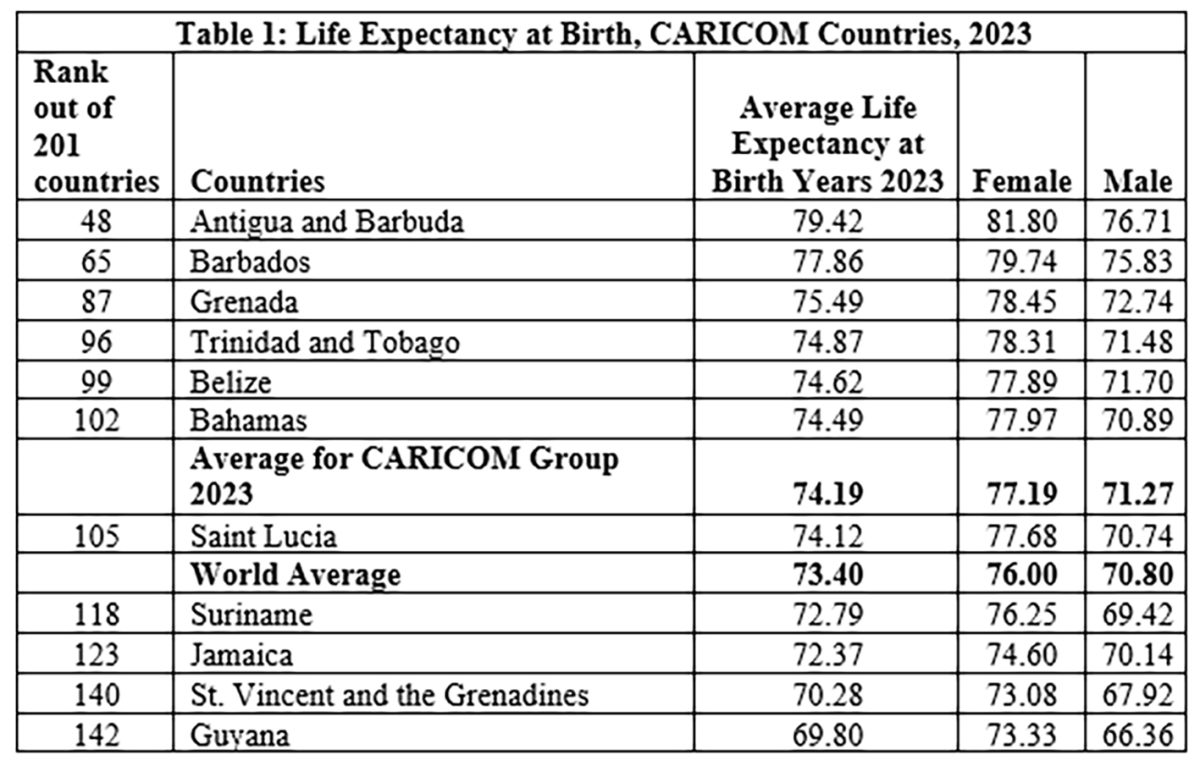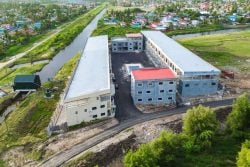Dear Editor,
On the occasion of Guyana’s 58th Independence Anniversary, President Mohamed Irfaan Ali is reported to have said that from 2020 to now (2024), the country’s life expectancy has increased by two years overall to 70 in males, and 74 for females. And that government’s new target is to increase overall life expectancy to 72 years by 2025 and 75 years by 2030 (demerarawaveshttps://demerarawaves.com/2024/05/26/guyanas-life-expectancy-increasing-maternal-child-mortality-falling/).
Undoubtedly, every Guyanese would be more than happy to welcome these statistics of improved life expectancy, for it would demonstrate that the quality of life is on an upward trend. Additionally, this outcome would indicate that there is widespread access to all forms of health care; there would be the enhanced availability of nutritious food; and a reduction in malnutrition and the poverty headcount, which measures the share of the population that lives below US$5.50 a day (https://www.kaieteurnewsonline.com/2022/11/03/world-bank-says-almost-50-of-guyanese-living-on-gyd1000-per-day/).
However, one would have to be skeptical of the life expectancy data as reported by President Ali for the following reason. In a report published by the Worldmeter (https://www.worldometers.info/demographics/life-expectancy/#countries-ranked-by-life-expectancy), it is confirmed that the average life expectancy at birth in Guyana in 2023 was 69.80 years, with the average age for females being 73.33 years; and the average for males being 66.36 years. The published data also confirmed that Guyana was ranked at the lowest level among several CARICOM countries for both males and females. From the data, it is also observed that Guyana is ranked at position 142 out of 201 countries, and was listed below the averages for CARICOM and the World (Table 1).
It is therefore contended that in order to boost the confidence and believability in what is being expressed by President Ali, it would be useful if the data and methodology that was used to generate the average life expectancy age of the typical Guyanese should be published. This is a job for the technical people and not the politicians.
Meanwhile, a preliminary analysis of Guyanese life expectancy can be undertaken from an examination of the persons who receive old age pension/NIS benefits. How many of these senior citizens, who have contributed so much to Guyana, are in or above the average age group, given that the median age of the typical Guyanese is 26 years (https://www.worldometers.info/world-population/guyana-population/)?
It is also useful to note that healthy life experiences depend on the timely access to several goods and services, and access to nutritious food, including an adequate supply of fish and shrimp, which were the cheapest source of protein in the Guyanese diet; but are now in short supply, and rising prices due to a number of factors. And in this regard, the cost-of-living experience of the typical Guyanese, as published by Stabroek News (SN: https://www.stabroeknews.com/2024/05/27/news/guyana/how-the-cost-of-living-is-affecting-people-38/), is an opening for investigating the problems of the access to healthy food; and the poverty headcount of the number of persons living below US$5.50 per day.
If Stabroek News were to complement their interviews by asking the age and income of the persons (only report averages, no names) that data would provide some valuable information, and enhance our understanding of the many concerns raised in this letter on life expectancy.
Sincerely,
Dr. C. Kenrick Hunte
Professor and Former Ambassador






